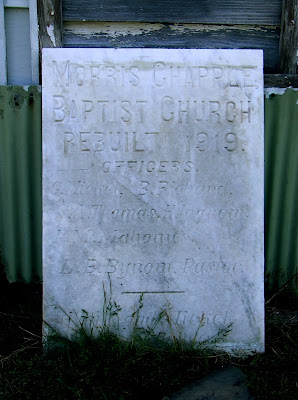
Dardanelle's first Presbyterian church was built in 1856 and was burned by Federal troops during the Civil War. A second church was built to serve the community until 1914, when the current church was dedicated.
Raising the money needed to pay for the construction was a labor of love on behalf of the Ladies Missionary Society of First Presbyterian. The following is excerpted from "A Brief History of the First Presbyterian Church: 'The Church Built by Women.'"
"During the first year of this effort, the ladies gave each member a quarter dollar. Like the servants in the Bible, they were to invest this money 'in ways to make it multiply.' One woman bought a yard of calico and bought an apron which she sold for a dollar. Some ladies raised as much as $5.00. They held bake sales, sold manufacturers samples, and some rode the Ola train to Clarksville during peach picking season and added their wages to the building fund. Soon, the 'money-making ladies' had caught the fancy of the whole town and Dardanelle waited to see what they would do next.
"Some of the women were from 'the best families,' and had never worked at anything more strenuous than embroidery or flower arrangement, but when Calvin Batson, a prominent farmer and a member of the church, jokingly suggested that he would give them a job picking cotton, they donned sunbonnets and headed for the field. The business houses closed their doors for the day, and the men turned out in a body to watch them pick. They cheered the ladies on from their seats on split rail fences, while they leisurely ate their picnic dinners from lard buckets.
 "Tom Grissom, the town photographer, made a photograph of the event, which appeared in in numerous state and national publications, and was even made into a postcard. It caught the eye of Fedinand T. Hopkins, a New York philanthropist, who subsequently sent a sizeable donation of money."
"Tom Grissom, the town photographer, made a photograph of the event, which appeared in in numerous state and national publications, and was even made into a postcard. It caught the eye of Fedinand T. Hopkins, a New York philanthropist, who subsequently sent a sizeable donation of money." This beautiful stained glass window of an angel is dedicated to Mr. Hopkins."From the outset, the members were determined that the building be paid for at
This beautiful stained glass window of an angel is dedicated to Mr. Hopkins."From the outset, the members were determined that the building be paid for at the time of its completion. The total cost was $8,978.57 and when the First Presbyterian Church... was dedicated on May 10th, 1914, there was just 83 cents left in the fund."
the time of its completion. The total cost was $8,978.57 and when the First Presbyterian Church... was dedicated on May 10th, 1914, there was just 83 cents left in the fund."The brochure quoted was compiled by Betsy Snyder Harris, a woman I met a few weeks ago, whose spirit and enthusiasm for the church and Dardanelle's history is contagious. I spent a day there last week re-securing bracers bars to some of the windows and I consider it an honor to work on the oldest church building in Dardanelle. Thanks to Betsy and Pastor Kelly Pearson.
 A familiar and always welcomed sight alongside Arch Street Pike near East End is that of Marylake Monastery. It was built as a country club by the Shriners back in the 1920s, but it had a short life as such. Another use that didn't take was as a hospital set up by the noted quack, John Richard Brinkley.
A familiar and always welcomed sight alongside Arch Street Pike near East End is that of Marylake Monastery. It was built as a country club by the Shriners back in the 1920s, but it had a short life as such. Another use that didn't take was as a hospital set up by the noted quack, John Richard Brinkley.




















